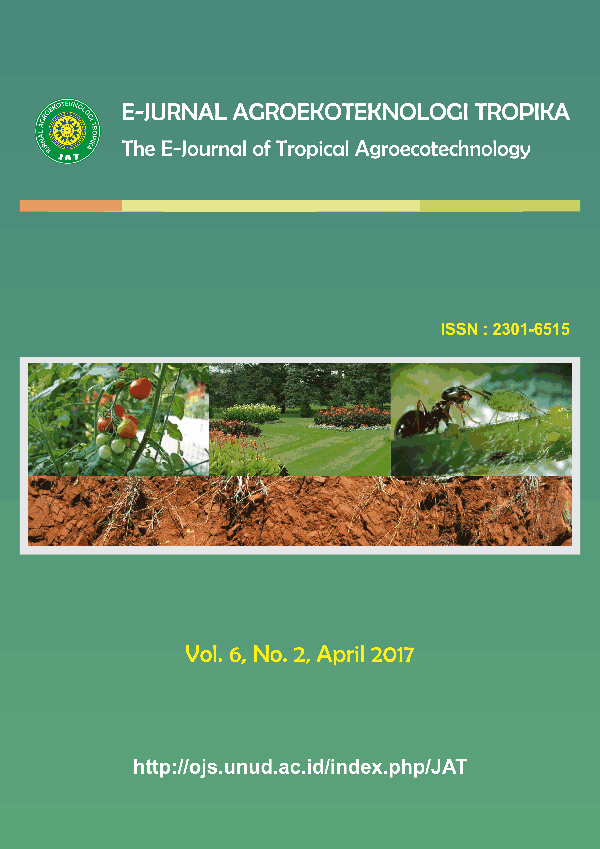Fitoremediasi Air Irigasi Menggunkan Tanaman Eceng Gondok (Eichornia Crassipes) dan Teratai (Nymphae sp.) di Subak Sembung Kelurahan Peguyangan Denpasar Utara
Abstract
Phytoremediation of Irrigation Water Using Water Hyacinth Plant (Eichornia Crassipes) and Lotus Plant (Nympae sp.) in Subak Sembung Peguyangan Village, North Denpasar
Subak Sembung Peguyangan village, north Denpasar has an area of 115 ha. Agrochemical use and land use change threatens the quality of irrigation water This research aimed to determine the quality of irrigation water in which the research had conducted from August to December 2015. The physical, chemical and biological qualities of the irrigation water analyzed through sampling the water gradually then the result was being compared to water quality standard in accordance with regulation Peraturan Gubernur Bali No. 8 Tahun 2007. The result showed that the irrigation water is contaminated with heavy metal Cadmium (Cd). The physical qualities of irrigation water was indicated by total value of TSS (0.60 mg/l) and TDS (270 mg/l), the chemical qualities was indicated by the value of pH (7,21), BOD (3,875 mg/l), COD (9,996 mg/l), and Pb (0,0345 mg/l) and the biological qualities of irrigation was indicated by Total Coliforms (150/100 ml). These three qualities is still below the quality standard. Treatment of water hyacinth and lotus show a downward trend in the value of Cadmium (Cd) and chromium (Cr) and the trend is increasing the value of BOD and COD. The result of using water hyacinth plant (Eichornia Crassipes) produces revealed better irrigation water quality than lotus plant (Nympae sp.).



